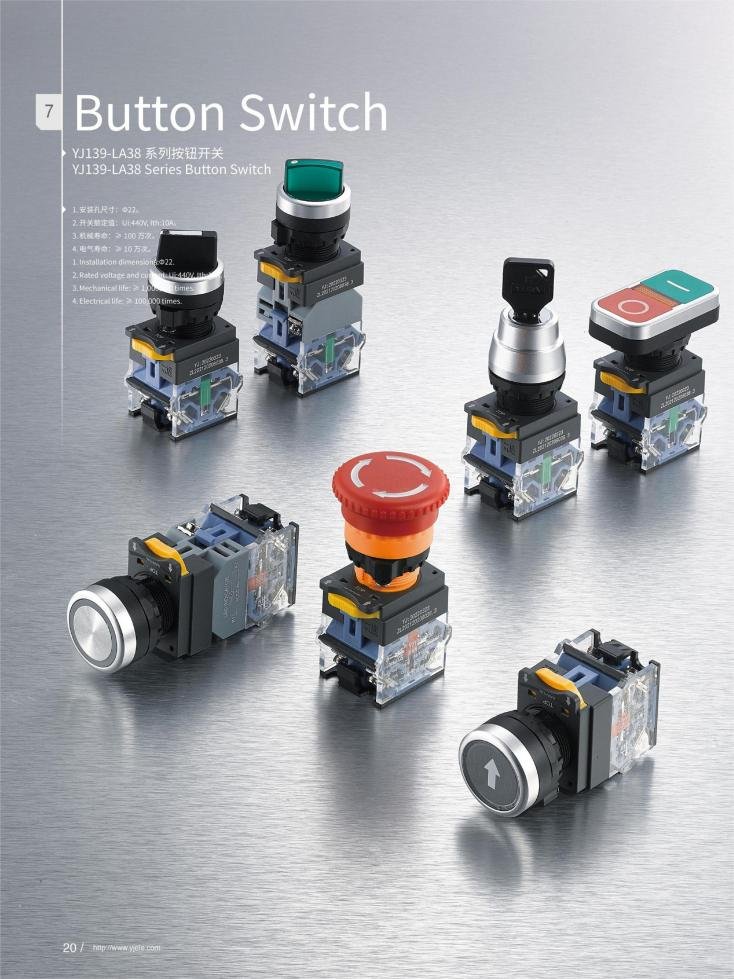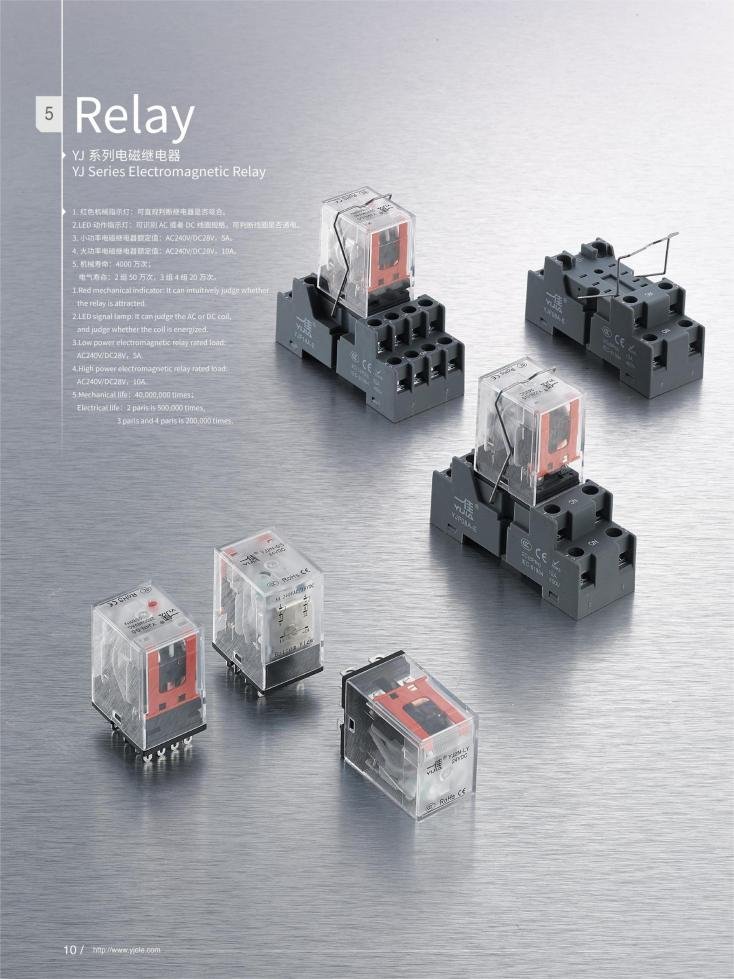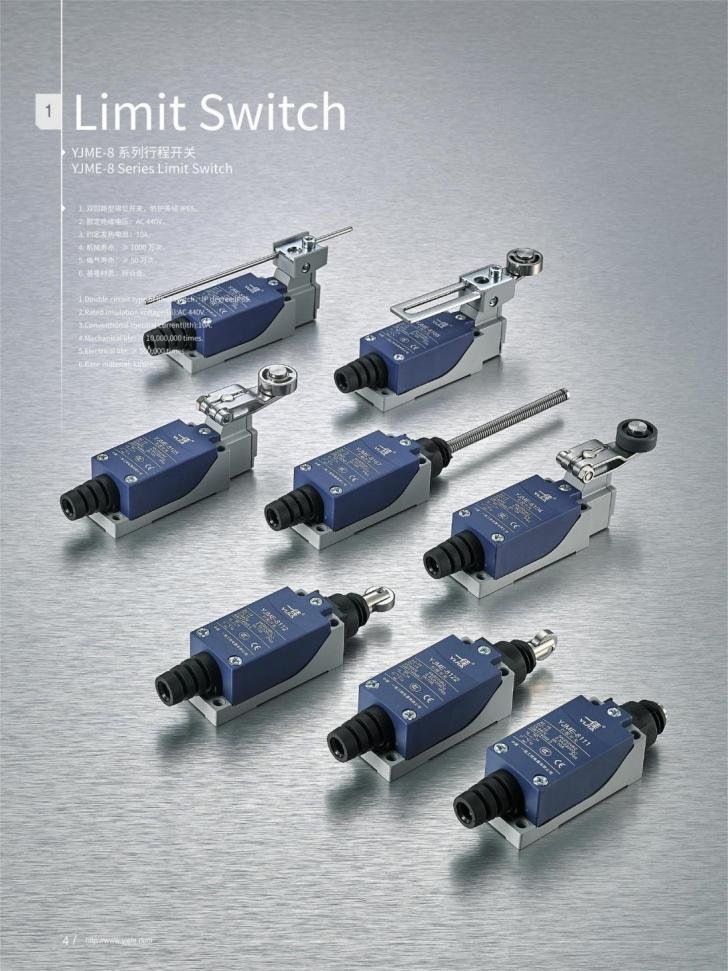Learn how to use traffic lights
What is a traffic light
A signal light is an optical signaling device used to convey information or warnings. It expresses specific information to the observer through different colors, flashing or continuous light. These devices are widely used in a variety of environments and occasions, such as traffic control, industrial production lines, safety warning systems, etc.
Signal lights are designed to be highly visible and communicate clearly even in low light or obstructed view situations. Common traffic light colors include red, yellow, and green. Each color usually represents different meanings and instructions. For example, red is often used to indicate stop or warning, green indicates passage or normal status, and yellow may indicate warning or attention.
In addition, the applications of signal lights are not limited to simple on/off signals, they can also implement more complex indicating functions, such as conveying more levels of information through flashing frequency or sequence. This versatility has made signal lights an integral part of many industries and fields.
working principle
How a signal light works depends on its design and configuration, allowing it to illuminate in different ways to convey a message. The following is a detailed description of the common working principles of traffic lights:
1. Power supply
Signal lights obtain the necessary energy by being connected to a power source, which may be DC or AC power. In modern applications, common power sources for signal lights include batteries, the grid, or power through other electronic devices.
2. Control system
Signal lights are usually connected to a control system, which can be a simple manual switch or a complex automatic control system or computer control system. These control systems activate or adjust the status of traffic lights based on specific input signals.
3. Light source
The light source of the signal light can be a traditional incandescent bulb, a halogen lamp, or a modern LED (light emitting diode). LED has become the light source of choice in the field of signal lights due to its advantages such as low energy consumption, long life and high luminous efficiency.
4. Optical components
In order to enhance the visibility and indication effect of signal lights, lenses or reflective materials are often used to focus or diffuse the light. These optical components help the signal lights be seen clearly in a variety of environments.
5. Color and coding
Signal lights emit different colors of light by using different colored bulbs or filters. Various colors have different standard meanings. For example, red is usually used to indicate stop or danger, green indicates safety or passage, and yellow is used to remind attention or caution. In some complex applications, signal lights may also convey more detailed information or instructions through different flashing patterns or sequences.
6. Response mechanism
In many automated or remote control systems, signal lights not only emit a visual signal but may also trigger other types of responses, such as activating alarms, shutting down the system, or other safety measures.
These components work together to enable signal lights to be effectively used as communication and warning tools in industry, transportation, security and many other areas. Signal lights are designed to provide clear and immediate visual cues at critical moments to guide action or prevent accidents.
Advantages and Disadvantages of Signal Lights
As an effective visual communication tool, traffic lights are widely used in a variety of scenarios. They offer a range of advantages, but also some limitations. Here are the main advantages and disadvantages of traffic lights:
Advantage
- Highly intuitive: Signal lights provide intuitive visual cues through color and flashing patterns, allowing people to understand and react quickly, especially in situations where quick decisions are required.
- Easy to install and maintain: Most signal lights have a simple design, easy installation, and low maintenance requirements. Especially the signal lights using LED lights, their replacement and maintenance costs are relatively low.
- High energy efficiency: Especially signal lights using LED technology have low power consumption, high luminous efficiency and long life, which can effectively reduce energy consumption and operating costs.
- Reliability and durability: Signal lights are typically designed to operate in harsh environments, including dustproof, waterproof, or explosion-proof designs to ensure stable operation in a variety of conditions.
- Adaptable: Can be used in a variety of environments, from traffic signals to factory production lines to public safety systems, signal lights can provide effective information transmission.
Shortcoming
- Visual limitations: Signals rely on visual recognition and may not be effective enough for people with visual impairments or in environments with obstructed vision.
- Color recognition issues: People with color blindness or color weakness may have difficulty distinguishing color changes in signal lights, which limits their general applicability.
- Single communication mode: Signal lights mainly convey information through visual signals, lacking sound or other sensory interaction methods, and may not be suitable for noisy or restricted sight environments.
- Limitations in conveying complex information: Although signal lights can convey certain information through different flashing patterns, the type and complexity of information they can convey are limited, and they are not suitable for conveying more complex instructions or data.
- Dependence on power supply: Most signal lights require a continuous power supply. Once the power supply is interrupted, the signal light will not work, which may lead to safety risks in some critical applications.
Types of traffic lights
There are many types of signal lights and they can be divided into several main categories based on their purpose, design and function. The following are some common types of traffic lights:
1. traffic lights
Traffic lights are one of the most common types of lights used to control road traffic. These lights usually include three colors: red, yellow and green, which are used to indicate stop, prepare and proceed respectively.
2. Industrial signal lights
Industrial signal lights are used in production lines and factories to monitor and control the operating status of machines. These lights usually come in multiple colors, with each color indicating a different operating status or warning message, such as machine running, paused, or malfunctioning.
3. Safety warning light
Safety warning lights are used to send warning signals to indicate potential safety hazards or emergencies. They are commonly found on construction sites, hazardous areas and emergency escape routes. This type of signal light usually has a high brightness and eye-catching flashing pattern.
4. Status indicator light
Status indicators are used on electronic devices and control panels to display the device’s working status or functional mode. For example, power indicator light, network connection status light, etc.
5. Aviation obstruction lights
Aviation obstruction lights are installed on tall structures such as tall buildings, communications towers and wind turbines to prevent aircraft from colliding with them. These lights are usually red or white and have a strong flashing or steady glow function.
6. Tower light
The tower light is a multi-layer signal light that is often used in industrial automation environments to display the status of machines or production lines through different layers of colored lights. The color of each layer has a specific meaning. For example, green usually indicates normal operation, red indicates failure or shutdown, and yellow may indicate a warning or a state requiring attention.
7. Explosion-proof signal lights
Explosion-proof signal lights are designed for use in flammable and explosive environments, such as petrochemical plants and mines. These lights must be designed to prevent any sparks or high temperatures from causing an explosion.
Application scenarios of signal lights
Signal lights play an important role in a variety of application scenarios due to their significant visual indication functions. Here are some common signal light application scenarios:
1. Traffic Management
Signal lights play a central role in road traffic management, indicating the traffic status of vehicles and pedestrians. The red light means stop, the green light means go, and the yellow light warns that the light is about to change.
2. Industrial automation
In industrial production lines, signal lights are used to display the operating status, fault warning or production progress of the machine, helping operators quickly understand the production status and take corresponding measures.
3. Safety warning
In potentially dangerous working environments such as construction sites, mining areas, and chemical plants, signal lights are used to warn workers to pay attention to safety, such as emergency shutdown warnings or toxic gas leak warnings during mechanical operations.
4. Air and sea transportation
Semaphores are used in aviation to indicate airport runways and helicopter landing areas, while in maritime transport they are used in ship navigation and port operations to indicate safe channels and tidal conditions.
5. Construction and real estate
Signal lights are installed on tall structures such as high-rise buildings and bridges to avoid aircraft collisions. In addition, signal lights are also used to indicate safety exits in buildings to improve the efficiency of emergency evacuation.
6. Public Safety and Emergency Response
Signal lights are critical in the public safety sector and are used, for example, on fire trucks, ambulances and police vehicles to ensure road priority for rapid response in emergencies.
7. Data Center and Network Facilities
In data centers or server rooms, traffic lights are used to display equipment status, such as power status, network connections, and system faults, helping maintenance personnel quickly diagnose and solve problems.
8. Medical and health facilities
In hospitals and other health facilities, signal lights are used to indicate the status of operating rooms or emergency rooms, as well as to control personnel access and ensure the smooth flow of medical operations.
Routine maintenance and troubleshooting
In order to ensure that the signal lights can reliably perform their functions and extend their service life, routine maintenance and regular troubleshooting are very necessary. Here are some basic maintenance and troubleshooting steps:
Routine maintenance
Regular cleaning:
- Clean the signal light’s lampshade and housing to remove dust and dirt to maintain good light transmission and visibility.
- Use an appropriate cleaner and soft cloth, and avoid using corrosive cleaners that can damage the shade material.
Check fixings and connections:
- Regularly check the signal light mounting fasteners to make sure they are not loose or corroded.
- Check whether the wire connection is firm to prevent functional failure caused by poor contact.
function test:
- Regularly test the functionality of your signal lights to ensure that all lights and flashing patterns are working as expected.
- For automatic control systems, check that sensors and control units are functioning properly.
Troubleshooting
Bulb replacement:
- If you find that the signal light does not light up or the brightness is insufficient, first check whether the bulb is burned out or aged, and replace it in time.
- For LED signal lights, although the LED has a long life, it is also necessary to check whether any LED unit is damaged.
Circuit check:
- If the problem with the signal light is not caused by the bulb, the circuit needs to be checked, including the wiring and switches.
- Use a multimeter to test voltage and continuity in the circuit to look for possible opens or shorts.
Control system failure:
- For signal lights connected to a control system, the failure may be caused by a faulty controller.
- Check the controller’s settings and programming to ensure it responds correctly to external signals.
Housing and seal maintenance:
- Check the signal light housing and seals to ensure there are no cracks or damage to prevent water and dust intrusion.
- For explosion-proof signal lights, check that the explosion-proof seal is intact.









